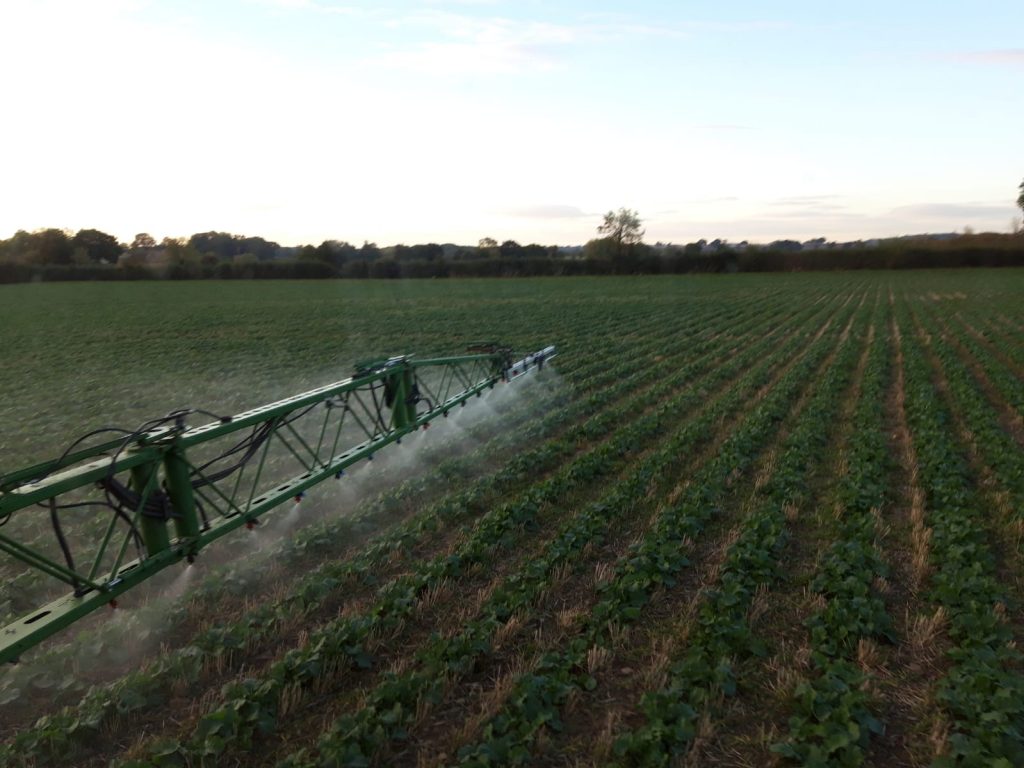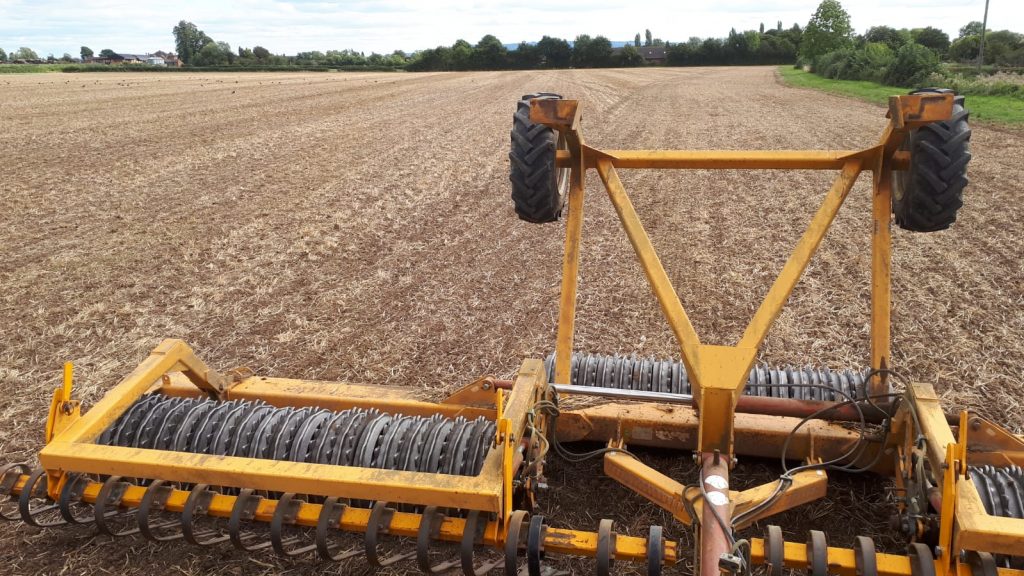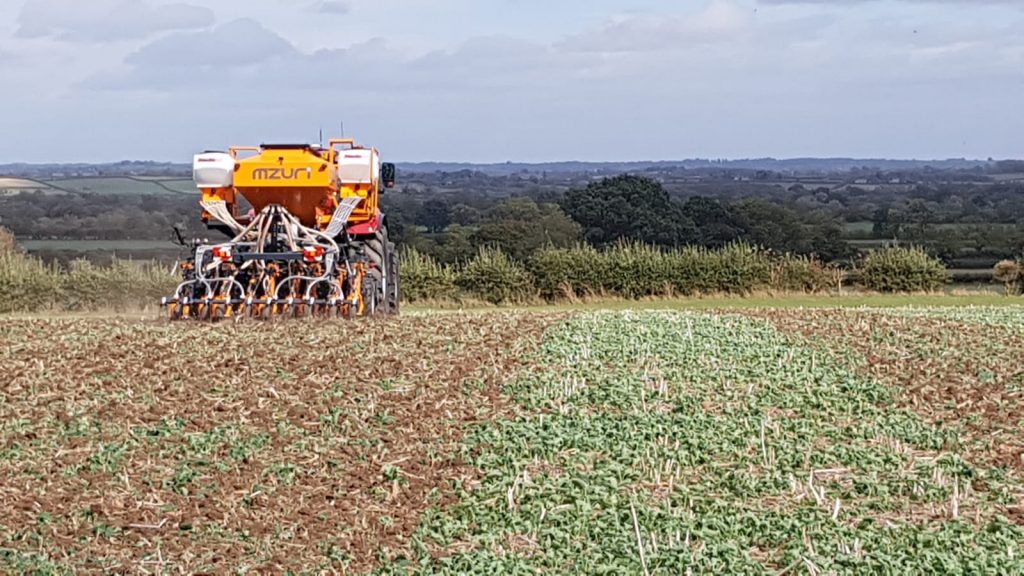Oilseed Rape
After spending an excellent day in the sunshine at Moreton-in-Marsh show, I thought I’d cap it off with an early evening check of our OSR crop. Having only seen the odd ‘shot hole’ up to this point I hadn’t anticipated seeing flea beetle at every turn upon my arrival. With that, my evening walk had turned into an evening of spraying.
The decision to spray Pyrethroids is not something we take lightly here what with the impact they can have on our beneficial insects. But given the seriousness of the situation and mitigating the risk by spraying at night, I felt the decision necessary and one well made to save the crop.
Looking at another challenge that has faced the farm, this has certainly been a year where moisture has been a precious commodity and where the Mzuri one-pass system has excelled itself. Through its immediate reconsolidation, minimal moisture is lost to the atmosphere but rather retained where it’s needed for quick and even establishment. Our Oilseed Rape has clearly benefited from this and when compared to multiple pass systems in the local area is visually stronger and more advanced.
The best ‘tonic’ though has been the awaited rainfall which, by the time it arrived, was well overdue. Using our ‘time lapse’ camera the growth within a 24hr time frame post rainfall was considerable and goes to show the impact that moisture really can have on growth. Thank goodness we hadn’t lost what was retained in the soil by heavy cultivations pre-drilling.

Our OSR receiving an insecticide on 26th September, drilled on 66cm row spacing
Late drilled cover crop for Blackgrass control
After achieving two flushes of Blackgrass using the Mzuri Rezult rake I sprayed the field off ahead of sowing on the 5th of September. Sowing a cover crop this late isn’t something we would normally do, but as part of a strategy to take control of Blackgrass that had gotten away, we were prepared to accept a lower biomass crop.
The mixture was something of a concoction of leftover seeds, sown at 10kg/ha and included Radish, Oats, Phacelia and Linseed. With a good blend of species and rooting structures I felt this recipe was on the right track to actively benefit the soil and improve structure, whilst keeping the Blackgrass seeds on the surface. The plan is to hopefully achieve another chit before next spring and clean the field up further in time for spring drilling.

Rolling in the last of the Autumn cover crops
Winter Wheat
Unusually for Springfield farm, our Wheat drilling campaign began in September; it was however, only 3ha’s of a plot as part of our trial field in preparation for our upcoming German visit. Each Autumn we welcome to the farm a large group of German farmers in conjunction with Mzuri and their Polish colleagues. The pressure was on to get a Wheat crop in and up in row, in time for their visit.
Seeded with Costello, the three hectares were split into three plots, each sown at a different rate: one at the 320seeds per m², (the standard farm rate), the second at 240s/m² and the third at 160s/m². This is part of of our ongoing experiments into light interception and optimum seed rates. Interestingly, our German visitors were most familiar with the 160s/m² rate as they favour a lower plant count, giving stronger individual plants that are better able to withstand their harsh winters. They viewed the 320s/m² plot as ‘far too thick’ which is probably a fair observation given the sowing date. I’m pleased that their view supports our idea of lower sowing rates promoting greater tillering, stronger plants and improved yield potential.

Starting the Wheat drilling campaign with seedrate trials